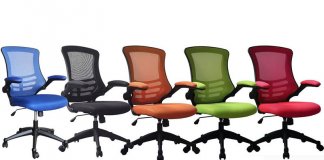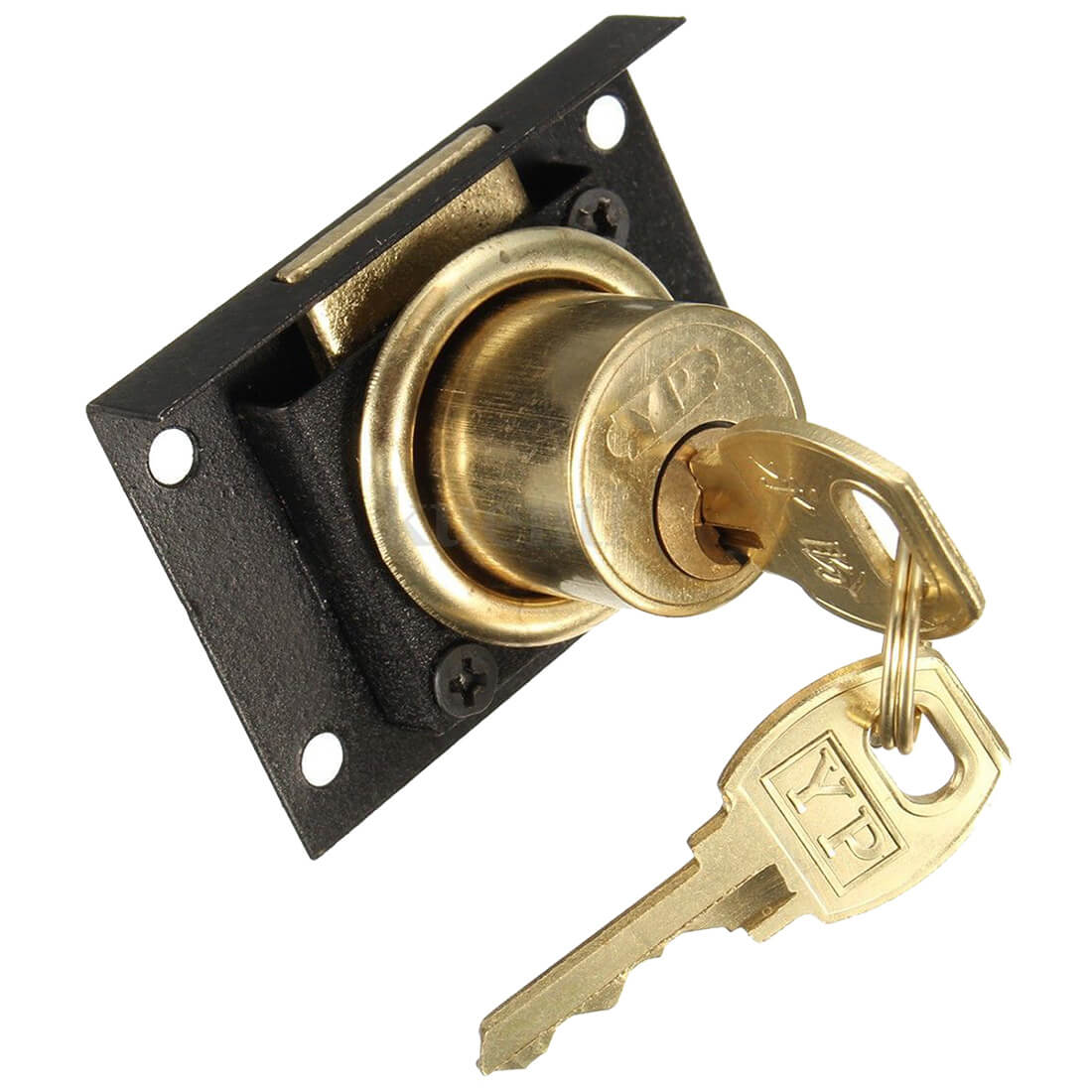
Imagine you’re late for a meeting, and you’ve just realized your desk drawer keys are missing. The desk drawer contains important files and you can’t leave without them. What do you do?
You may have encountered such a scenario at some point. Maybe even right this moment as you’re reading this article. You feel helpless, anxious, and nervous at the same time. Well, don’t work yourself up too much; there are various solutions you can take advantage of to rescue yourself and your important files.
One of the most noninvasive techniques you might consider for this problem is picking the desk drawer lock.
How the Lock Works
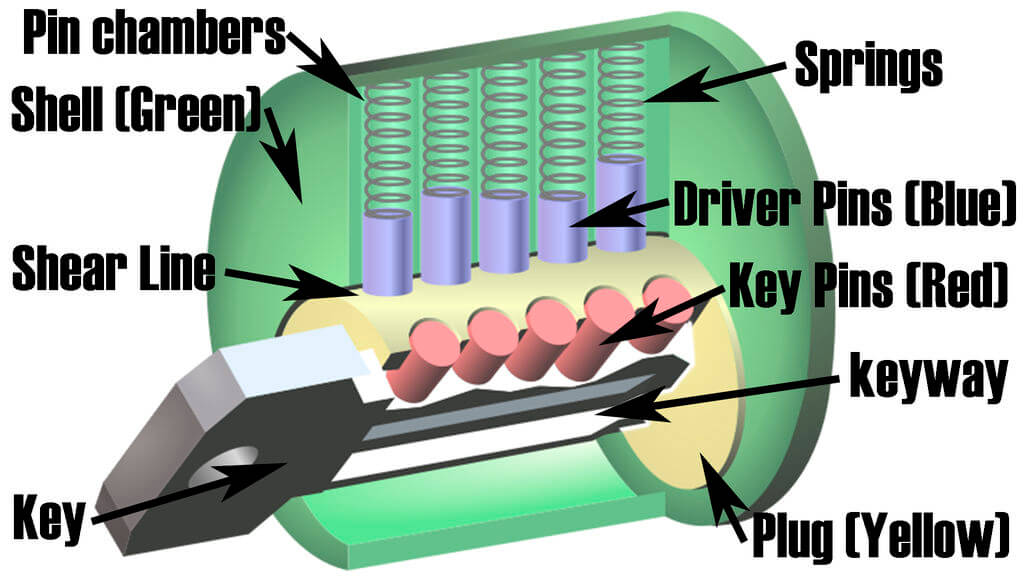
To successfully pick a lock, you first need to understand how it works. A simple drawer lock will have three main parts: a set of pins, the tumbler (inner cylinder), and a hollow, outer cylinder. The pins are of different lengths and each pin is housed in a shaft, stretching through the inner cylinder/tumbler and outer cylinder, to stop the tumbler from turning.
All the pins are positioned in two pieces: a top as well as a bottom section. When you insert your key, the seam amid the top and bottom pins aligns with that amid the tumbler and outer cylinder. Alignment of the pins allows the lock to be opened when you turn the tumbler.
When trying to pick a lock, therefore, you’ll need to set all the pins into the right position while maintaining pressure on the lock with a tension wrench.
Method 1: Using Paperclips
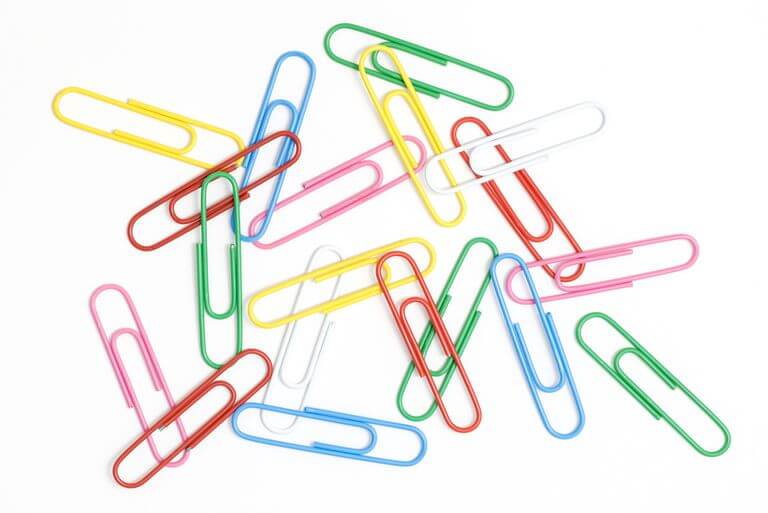
- Preparing Your Tools
The best thing about picking a lock using paper clips is they’re easily accessible. You’ll only need three things: two large paper clips and a pair of pliers. One paper clip will act as the lock pick and the other one will act as a tension wrench. While there’s no fixed size for the paperclips, you’ll want to make sure they’re slim enough to fit into the lock. They should also be long enough so that even after inserting into the lock, a significant portion would still be left for you to hold during turning. The pair of pliers will help you to shape paper clips. You can use your hands, but it’s a little harder.
Take one of the paper clips and unfold it twice. You’ll be using the straightened part as the pick. Some locksmiths like to bend the tip of the pick upwards to depress the pins contained within the lock, though this is not mandatory.
Make a tension wrench by twisting a straightened clip at about a quarter length all the way until you have two parallel wires touching each other. Now grab both wires at the portion where the shorter one ends, then twist about a 90-degree angle to obtain an L-shaped configuration. This should act as a basic wrench.
- Picking the Lock
- Insert your tension wrench into the keyhole’s bottom (also known as the shear line). Apply pressure using the tension wrench in a rotational fashion, depending on how the lock turns. The amount of pressure should be just right. If it’s too much, the paper clip with twist out of shape, and if it’s too little, the pressure won’t be sufficient to pick the lock.
- Twist the wrench about the direction the lock turns. This can be a challenge if you’re not certain which way it turns, though it’s vital to turn the wrench in the correct manner. There are two ways to determine the right way. First is through guess work. Try both directions. The second depends on the sensitivity of your touch. Notice the direction that needs less pressure. That should be the right direction.
- Insert your pick against the upper part of your keyhole and rake. Raking refers to what you do when you insert your pick against the back of the keyhole and withdraw it swiftly while pushing the pick forward. If you do this several times, you’ll likely set some of the pins. Make sure to maintain pressure on the tension wrench while performing this motion. Failure to do so means less chance for success. Also, don’t be too quick with the pick to the point where you’re just yanking it out. Nevertheless, you want the motion to be quick enough that it’s smooth.
- Pinpoint the pins within the lock: While maintaining pressure on your tension wrench, try to use your pick to pinpoint the locks inside the lock. You need to set all the pins to open the lock. You’ll be able to feel the pins as you insert your lock pick. This will indicate to you where you need to apply pressure.
- Depress the pins inside the lock: While depressing the pins, make sure to apply rotational pressure with your tension wrench. You should sense a slight clicking sound or give when all the pins are set to unlock.
- Be sure to jiggle the pick up to the point where each pin has unlocked: While increasingly applying pressure with your tension wrench, continue to jiggle the pick until you feel each pin has unlocked. A click or snap is an indication that you need to apply rotational pressure to your tension wrench to pick the lock open.
Method 2: Using Professional Tools (A Pick, Tension Wrench, and Raking Tool)
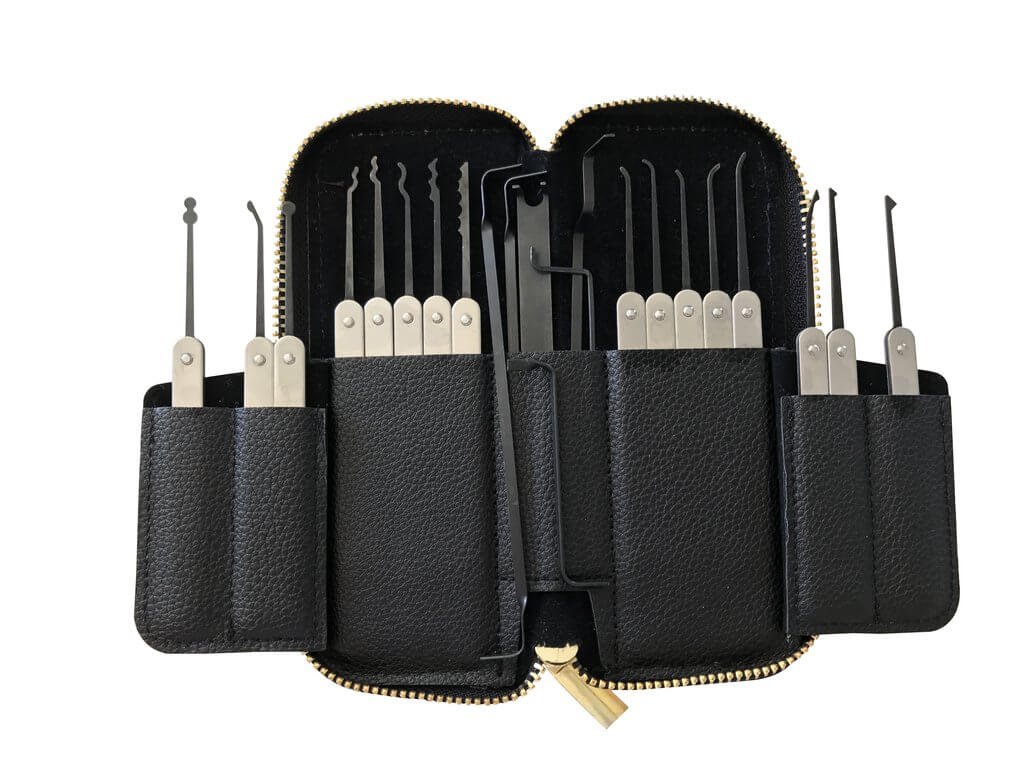
If you want to do this like a professional, you’ll needs special tools such as raking tools, picks, and tension wrenches. They are all contained in a lock picking kit. You may also need an appropriate lubricant, such as lubricating graphite.
Insert your tension wrench into the lock and twist it the direction the key normally turns. One technique to pick the lock is to depress each pin into the correct position one at a time. The other method is known as raking. It involves inserting your pick to the back of the lock then withdrawing it quickly while depressing all the pins up and applying tension with the tension wrench.

Stephen is a versatile and enthusiastic content writer with a passion for writing. He has over 8 years of experience in the field of writing. He strives to transform businesses and lives through his writing, and enjoys every minute of it.













